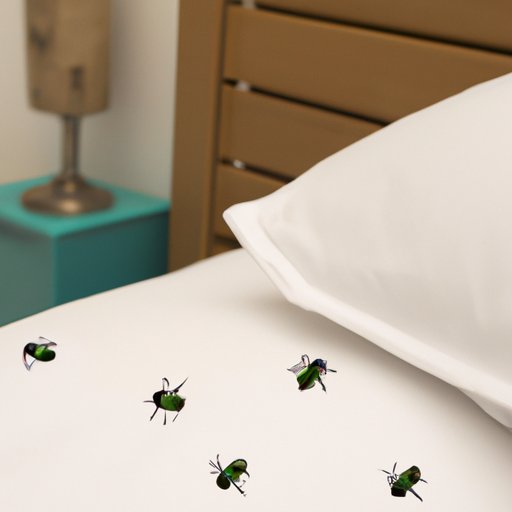Introduction
Bed bugs are small, parasitic insects that feed on human blood. They are known for their ability to hide in tight spaces, making them difficult to spot and eradicate. In recent years, they have become increasingly common in both residential and commercial settings. As a result, it is important to understand how bed bugs move around and if they can travel on clothes.
Fortunately, there is evidence that suggests bed bugs cannot survive on clothes for extended periods of time because they require a certain temperature and humidity level to survive. However, this does not mean that they can’t be brought into a home or business on people’s clothing.
How to Prevent Bed Bugs from Hitchhiking on Your Clothing
The best way to prevent bed bugs from hitchhiking on your clothing is to take proactive steps before packing for a trip. First, inspect your home for signs of bed bug activity such as blood stains on sheets, molted bed bug skins, and live bed bugs. If you find any of these signs, contact a professional pest control company immediately.
When packing for a trip, store your clothes in sealed plastic bags to minimize the risk of bed bugs hitchhiking on your clothing. Additionally, upon returning home, wash and dry all clothing on the highest heat setting possible to kill any potential bed bugs.

The Dangers of Bringing Bed Bugs Home Through Your Clothing
If bed bugs do make their way into your home or business through your clothing, they can cause a variety of health and financial issues. Bed bugs are known to spread a number of illnesses including skin rashes, allergies, and asthma. In addition, treating an infestation can be costly, with some estimates suggesting it can cost upwards of $1,000.
A study published in 2017 by the Journal of Medical Entomology found that “as the number of bed bug infestations continues to rise, it is critical that public health professionals understand the risks associated with infestations and how to prevent them.”

Tips for Travelers: What to Look Out For to Avoid Bringing Bed Bugs Back with You
When traveling, there are several steps you can take to reduce the likelihood of bringing bed bugs back with you. First, inspect hotel rooms for signs of bed bug activity such as dark spots on sheets and mattresses and live bed bugs. Additionally, keep luggage off the floor while staying in hotels and avoid buying used furniture or clothing while traveling.
If you suspect that your hotel room has bed bugs, it is important to notify the staff immediately. Additionally, take preventive measures when packing your belongings to ensure that you don’t bring any bed bugs back with you.
Conclusion
In conclusion, while there is evidence that suggests bed bugs cannot survive on clothes for extended periods of time, they can still be brought into a home or business on people’s clothing. To prevent this from happening, it is important to take proactive steps before packing for a trip, such as inspecting for signs of bed bug activity and storing clothes in sealed plastic bags. Additionally, upon returning home, wash and dry all clothing on the highest heat setting possible.
When traveling, it is also important to inspect hotel rooms for signs of bed bug activity and keep luggage off the floor while staying in hotels. By taking these preventive measures, you can help ensure that you don’t bring any bed bugs back with you.
(Note: Is this article not meeting your expectations? Do you have knowledge or insights to share? Unlock new opportunities and expand your reach by joining our authors team. Click Registration to join us and share your expertise with our readers.)
